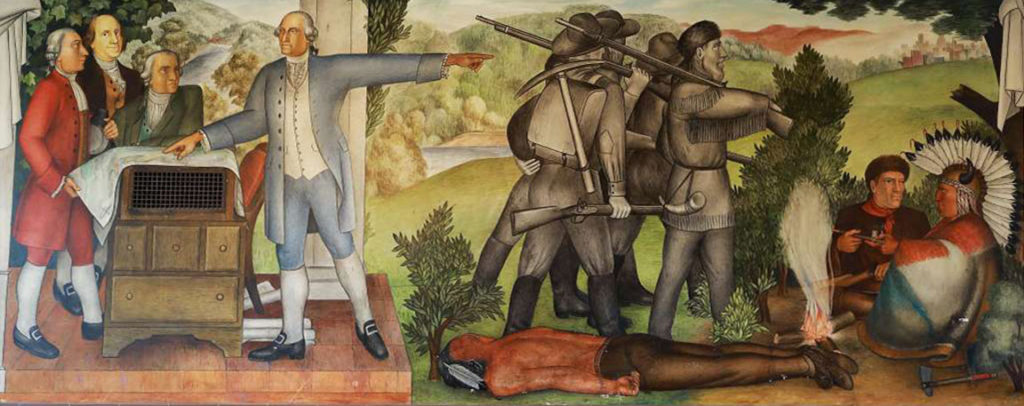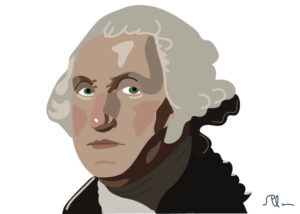The Americans

Next week we launch a new series—The Americans—on American movers and shakers of the lesser-known variety. There is perhaps no better way to weather the white supremacist and nationalist storm currently fomenting in our country than to celebrate the courage, creativity, conviction, and constancy of those who, despite the ravages of oppression and bigotry and hatred, the challenges of poverty and a lack of resources, and the loneliness and marginalization of difference, nonetheless found a way throughout this nation’s history to bring about much-needed change and address grievous wrongs.
We will consider a wide range of change agents in social and cultural movements, in the sciences, in politics, and in the arts, as well as in other arenas of work. Our featured Americans are young and old; they are black, brown, and white; they are male and female; they are straight and queer; they are able bodied and brained and differently abled; they are human and nonhuman.
What unites them all is the fact that, despite fierce opposition or terrible odds, they pushed on. Each had a vision and pursued it doggedly. Each found a way around the obstacles. And, regardless of his or her achievements, each was largely overlooked in textbooks and in the historical record studied and promulgated by society at large.
What Is an American?
Who is included in the broad net of American history? What is an American? and tackle this question in their Washington Post essay about their 2018 Grinnell College poll on American attitudes toward national identity. The two authors take a few moments to review the values identified by the largest numbers of respondents as being core American values:
- 90%: treating people equally
- 88%: taking personal responsibility for one’s actions
- 81%: accepting people of different racial backgrounds
- 78%: accepting people of different religious backgrounds
What concerned the authors were the quarter or so of respondents who “espoused nativist attitudes.” Nativism in the United States is defined as effort to protect the interests of those who are native-born or are established inhabitants. It is a form of xenophobic (fear of others) nationalism.
Elfenbein and Hanson write that “Nearly half of people who identified as ‘strong Republicans’ said that being born in the United States and being Christian were essential parts of being American.”
Here are the additional poll results:
- 24%: those who are born in the United States (32% of Republicans, 18% of Democrats)
- 23%: those who have lived in the United States most of their lives
- 23%: those who are Christian
- 44%: those who speak English
The authors proceed to show that this more nativist opinion block has always been with us, for example prompting the Supreme Court’s Dred Scott decision, operating behind the Chinese Exclusion Act, guiding Roosevelt’s Executive Order 9066, and as the impetus behind recent efforts in Tarrant County, Texas, to oust Shahid Shafi, the Muslim who is Vice Chair of the Republican Party. The authors worry that, most currently, nativist ideals are contributing to endangering “the health of our two-party system by increasingly making one party inhospitable for anyone not fitting a nativist profile of Americanness.”
They also worry about one of the two major political parties being “unable to draw upon the full insights and talents of the entire American citizenry.”
That’s the problem with nativist, nationalist, and/or neo-Nazi attitudes: They tend to overlook the important contributions of a much wider population. And that oversight, in turn, fosters an incorrect perception about who is important and who is making contributions. With this vicious cycle, it doesn’t take long for entire groups of people to disappear from history.
Was George Washington a Demi-God Cloaked in Hand-Stitched Silk?

The Americans will try to challenge the disappearance cycle. The series will also tread carefully so as not to contribute to the marbleizing of historical figures, or turning humans into impossible icons or superheroes, which is something our history textbooks have a tendency to do.
A recent example of the clash between marbled icons and reality is happening right now in San Francisco. The controversy has its roots in 1936 when Works Project Administration artist Victor Arnautoff painted a 13-panel mural titled “Life of Washington” for San Francisco’s George Washington High School. A segment of the mural is shown above.
Arnautoff chose to depict Washington in a different way than public projects had before. In the murals, he painted Washington as, among other things, a slaveholder who was also responsible for the genocide of American Indians. He also showed Washington saying goodbye to his mother before leaving for the capital, leading his armies in war against the British, and working as a surveyor.
People who worry that Arnautoff’s images of slavery and death are disturbing to students at the high school have been trying to get the works removed, and in June of this year the San Francisco Board of Education voted to destroy the murals. But a countermovement to maintain the paintings and the broader, more complicated reality they depict is mounting.
Regardless of what happens to Arnautoff’s work, the questions raised by this controversy are well worth examining. One question is about whether there are people who can stand up to the scrutiny of history and emerge as flawless heroes. The answer is no, obviously. We have to stop yearning for idols and start looking for role models, their expertise limited to the arenas in which they excel. Here are more questions:
- Does Washington have to have been all good or all bad? Can’t he be a flawed human being who did some things we want to celebrate and others we want to prevent from happening again?
- Are we so simple minded and feeble that we can’t maintain two concepts in our heads at once, that Washington was our first president and an able general against the British and that he was also a slaveowner and participated in genocide?
- Is the effort to remove the murals about protecting children from disturbing images or is it about “protecting” them and society at large from truth? Aren’t we strong enough to handle ambiguity?
The Americans will celebrate the specific achievements of lesser-known figures, but it will not gild those figures. We all need to learn to look to people and their accomplishments for inspiration without requiring those people’s canonization.
What Could Bring Us Together Is What Keeps Us Apart
When a nation’s historical record omits the contributions of some in favor of the contributions of a select few, the same few who wield the greatest share of power, three lies are told:
- The powerful did everything that was done on their own, maybe supported by people like them.
- All the other people who are omitted didn’t contribute and so they don’t really belong. This second lie helps the people in power stay in power and perpetuates the third lie.
- Those omitted people are expendable and to blame for anything that goes wrong.
But what would happen if the historical record instead told a broader truth, recognizing the wide range of contributors? Then it would be much more difficult to tell an us vs. them story. Then it would be much more difficult to dismiss entire populations as being unimportant, uninvolved, unnecessary. Then maybe we could begin the work of assessing what someone did instead of who they were.
The born-here-only, Christian-only, or English-only viewpoints are so flawed, they can’t stand up to any kind of logical scrutiny and are easily dismantled. You can have some fun with this. Try any of the following you like:
- Argue that it’s not enough to be Christian. Only Puritans are true Americans. Insist on bonnets, aprons, buckles, and tall hats as proof.
- Pick a random year, say 1550, and announce that only people who have ancestors born here before 1550 are American. Everyone else is squatting.
- Give a really difficult English grammar test to everyone. Only people who pass can be considered true Americans. The current president will have to resign because only a true American can hold the highest office in this country.
Stay tuned for next week’s episode of The Americans about Barbara Johns, the 16 year old who took her fight all the way to the Supreme Court.
Related Stories:
Barbara Johns: The Teen Who Started a Movement
Judy Heuman: Rolling out Rights for the Differently Abled
Fred Korematsu: Standing up for Citizens’ Civil Rights
Art by splane.
